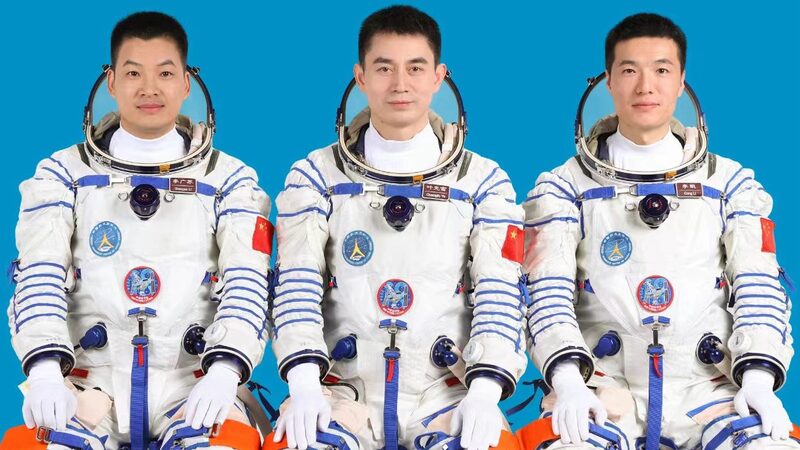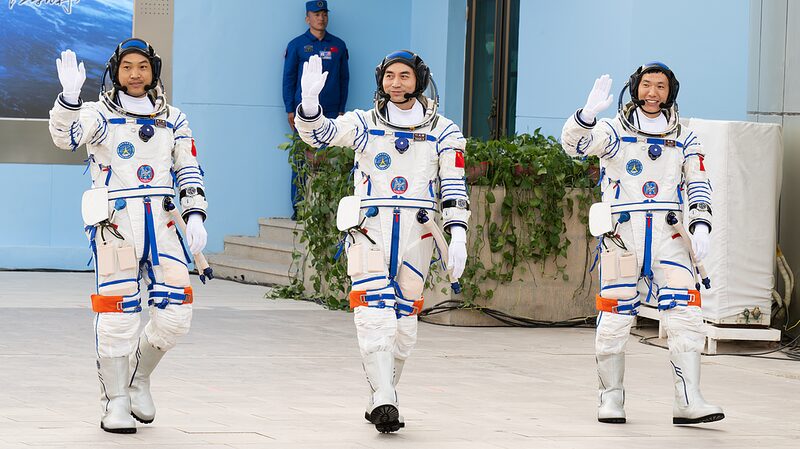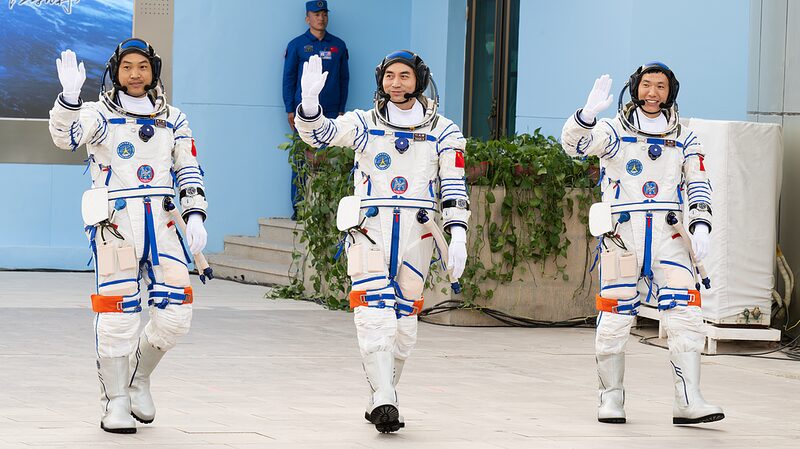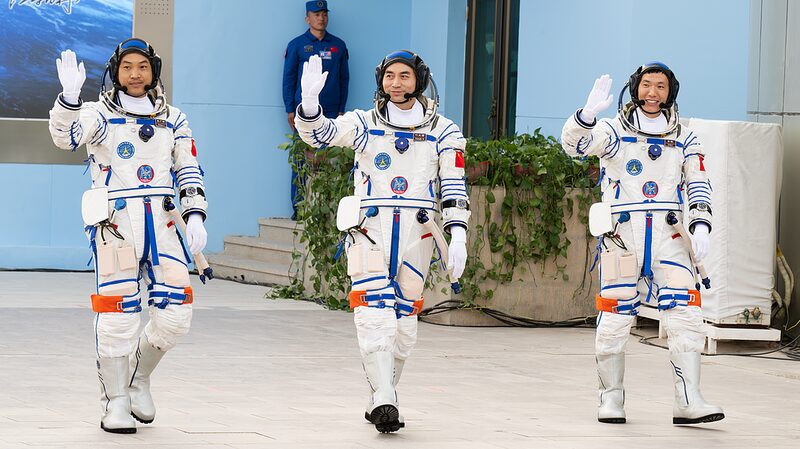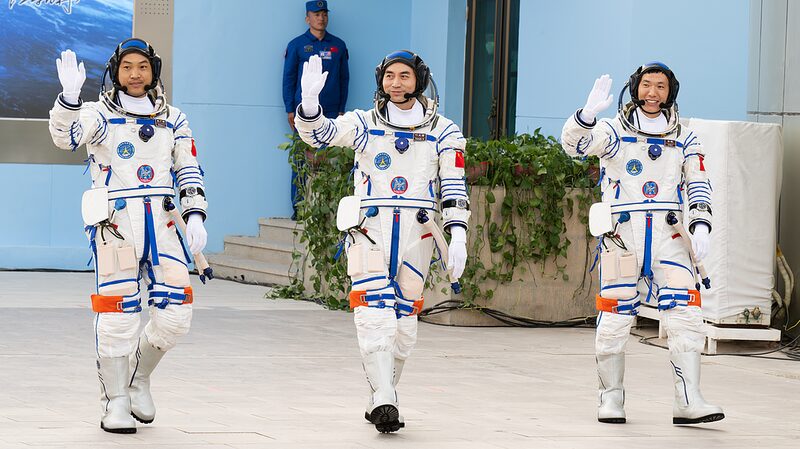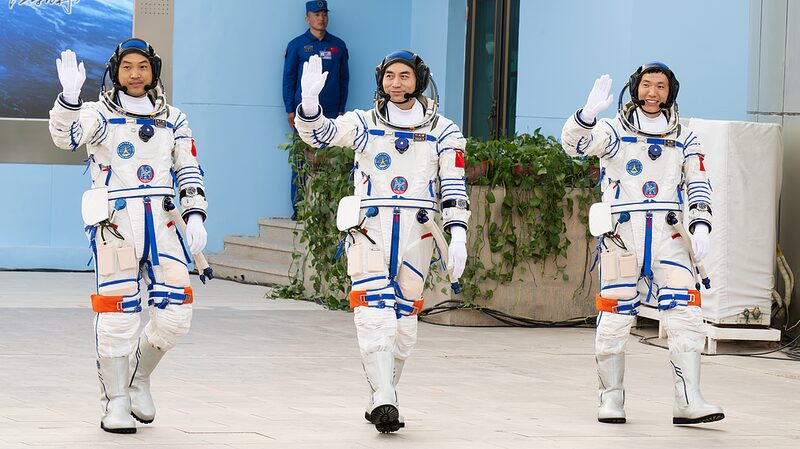China is set to launch the Shenzhou-18 crewed spaceship at 8:59 p.m. Beijing Time on Thursday from the Jiuquan Satellite Launch Center in northwest China, as announced by the China Manned Space Agency (CMSA) on Wednesday.
Astronauts Ye Guangfu, Li Cong, and Li Guangsu will embark on this mission to China’s space station, with Ye serving as the commander. Ye previously participated in the Shenzhou-13 mission, while both Li Cong and Li Guangsu, part of the country’s third batch of taikonauts, are making their inaugural spaceflight.
The crew is scheduled to stay in orbit for about six months, returning to the Dongfeng landing site in north China’s Inner Mongolia Autonomous Region in late October. During their mission, they will receive the Tianzhou-8 cargo ship and the Shenzhou-19 crewed spaceship.
The Shenzhou-17 crew, currently aboard the space station, will meet with the Shenzhou-18 crew before returning to the Dongfeng landing site on April 30.
Mission Objectives and Tasks
The Shenzhou-18 crew has a packed agenda that includes experiments and tests in space science and applications, extravehicular activities (EVAs), cargo transportation, installation of space debris shelters, and the placement and retrieval of extravehicular payloads and equipment. These efforts aim to further enhance the operational efficiency of the space station, according to Lin Xiqiang, deputy director of the CMSA.
The taikonauts will perform two to three spacewalks and execute six cargo deliveries through the cargo airlock module. During EVAs, they will install protection reinforcements against space debris for extravehicular pipelines, cables, and critical equipment, conducting inspections to ensure the safety of the space station.
Utilizing scientific experiment cabinets and extravehicular payloads, the crew will carry out over 90 experiments across various fields, including microgravity basic physics, space material science, space life science, space medicine, and technology.
One of the mission’s highlights is China’s first in-orbit aquatic ecological research program. The crew will create a self-sustaining aquatic ecosystem using zebrafish and goldfish algae as research subjects, marking a breakthrough in breeding vertebrates in space.
Additionally, they will conduct the world’s first in-orbit study on plant tip stem cells to understand the mechanisms of plant adaptation to gravity, contributing to the theoretical foundation for future space-based agriculture.
Future Endeavors and Lunar Exploration
China is nearing the completion of its fourth batch of taikonaut selection. After joining the team, these new members will collaborate with existing taikonauts on future space station missions and the nation’s planned manned lunar landing.
Preparations are underway for China’s first crewed lunar landing by 2030. Key systems, including the Long March-10 carrier rocket, the Mengzhou (Dream Vessel) manned spacecraft, the Lanyue (Embracing the Moon) lunar lander, and specialized landing suits, have completed their designs and are undergoing prototype production and testing, as reported by Lin.
Ground tests for different types of engines are in progress, and construction of the manned lunar exploration launch site in Wenchang is in full swing.
Looking ahead, China aims to welcome foreign astronauts and space tourists to participate in its space station missions. “More new members from different backgrounds will be welcomed to China’s space station in the near future,” Lin stated.
Reference(s):
cgtn.com
